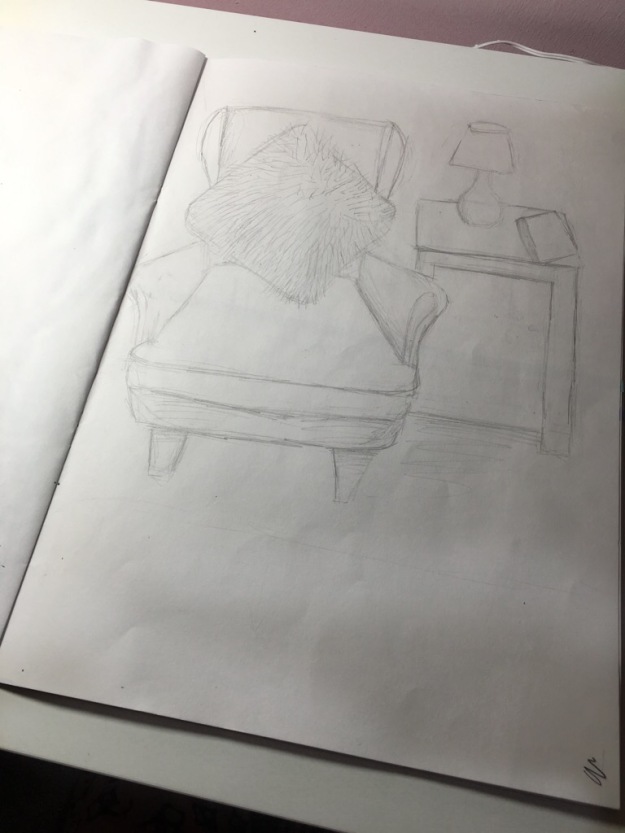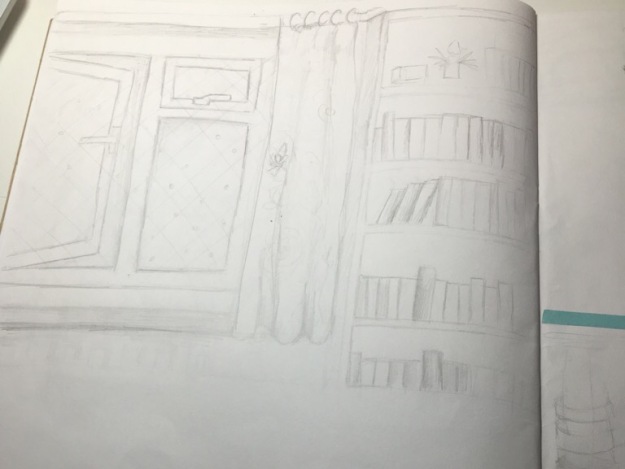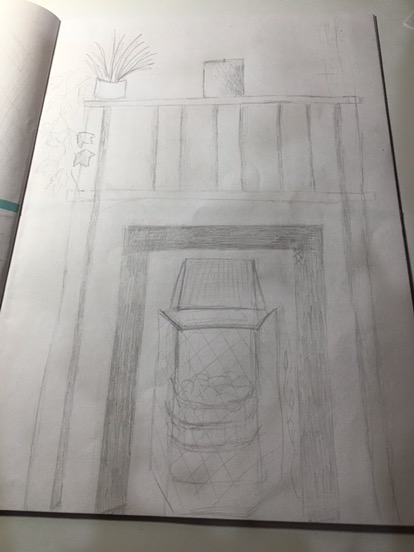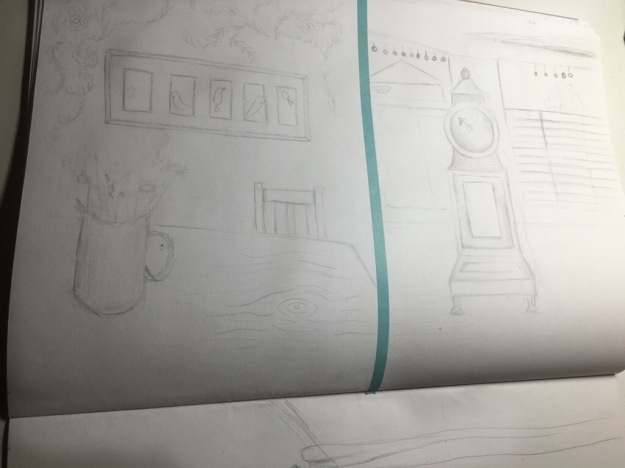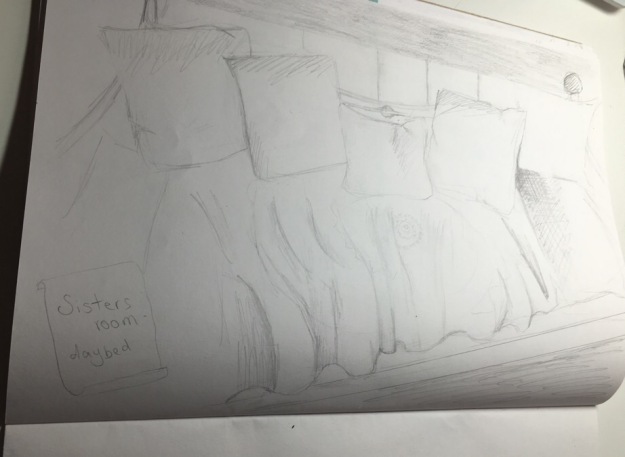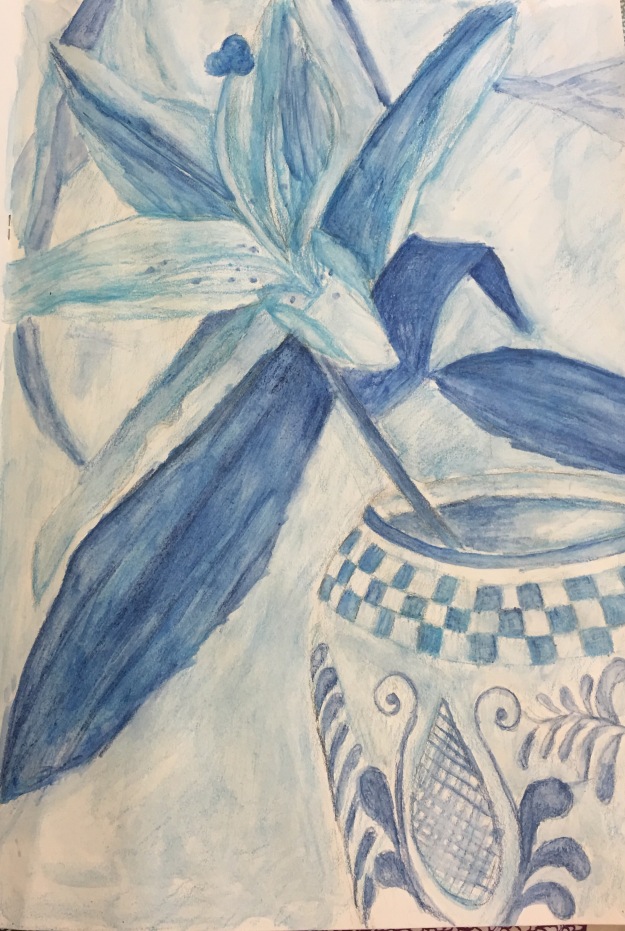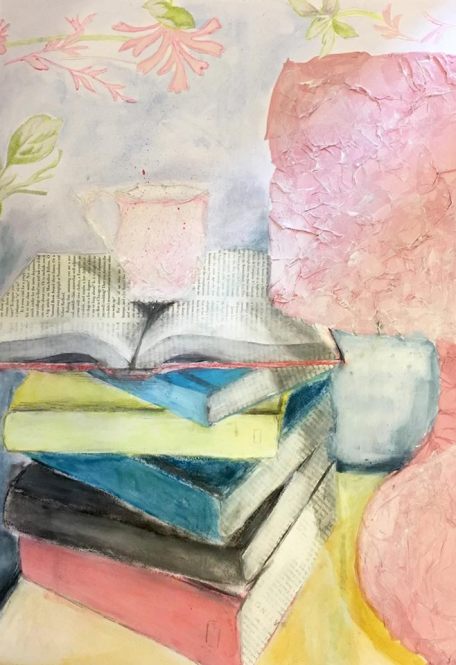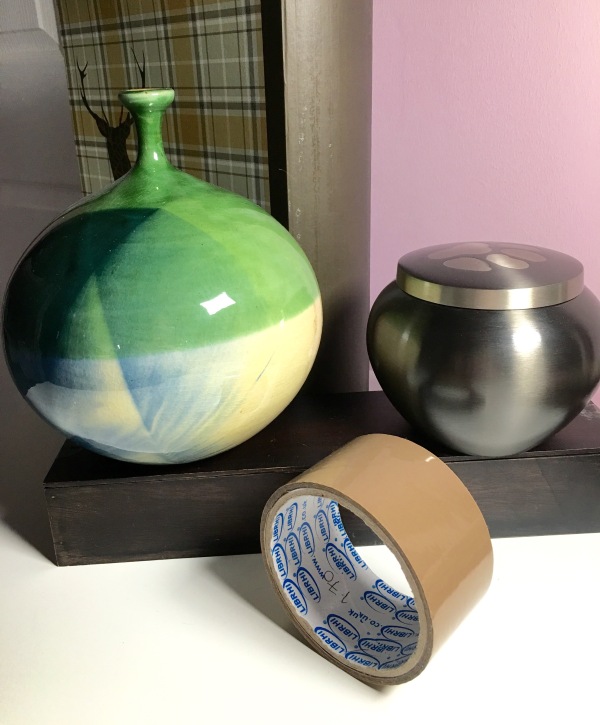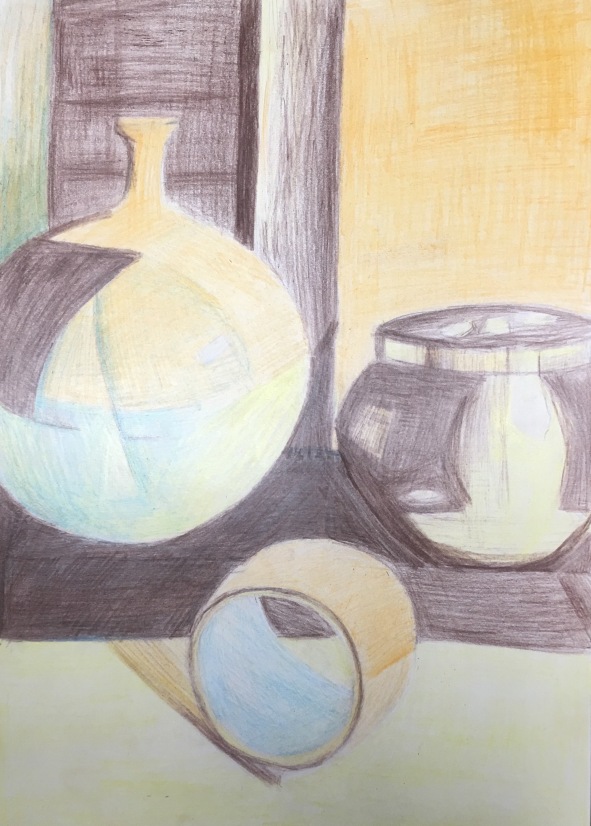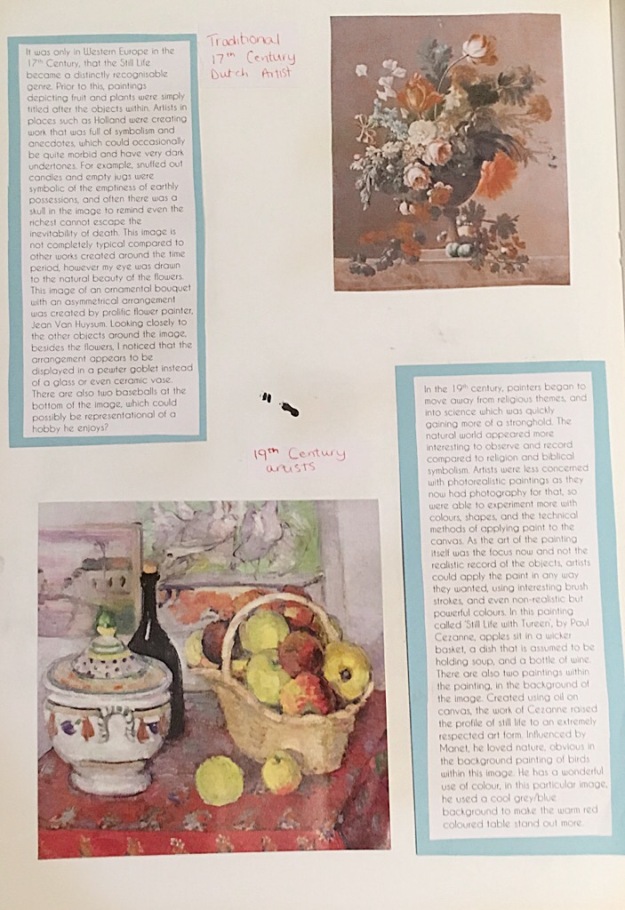Concluding part 4, we were asked to create a final drawing culminating from our previous exercises, just on a larger scale. As I sometimes find it a little physically difficult to work on A1 size paper, I decided to go for A2. I definitely need to pick up an A1 drawing board as I only have smaller sizes. I love the personal feel that comes from drawing interiors, it’s a very intimate look into someones home and this has been my favourite sections of the entire course so far. Overall, I believe this image is quite successful.
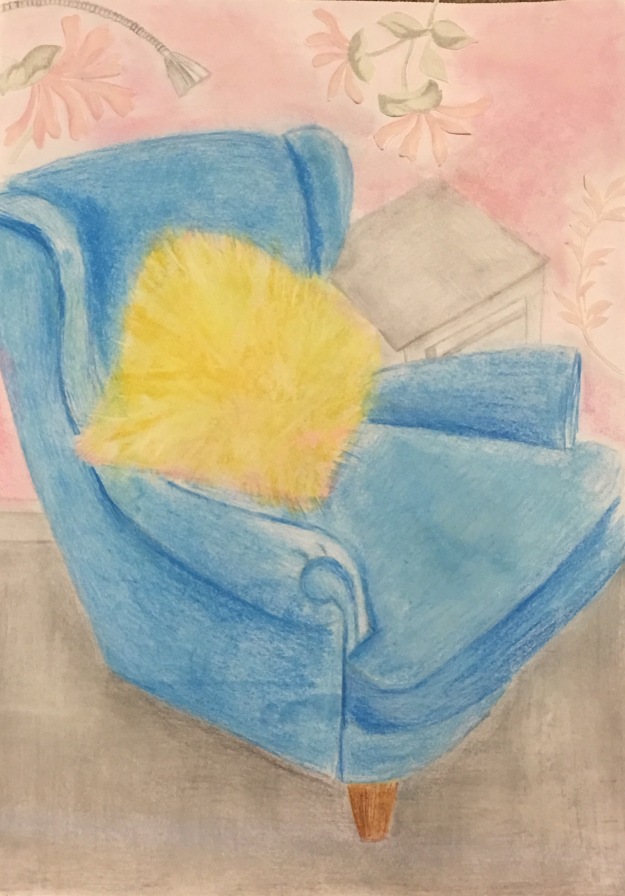
A2 paper
I started off lightly sketching out the chair. I tried to place it at a unique angle with a hint of foreshortening and I think I achieved that, even if only subtly. I actively chose to not overly exaggerate the visible depth too much, although I could have been brave and created a startling, almost uncomfortable version of reality and a disproportionate chair. Something I wish I had done in the previous exercise to this was create small, exaggeratedly foreshorted drawings of my chair and just see how far I could actually have taken it. I always have a lot more confidence experimenting in my sketchbook. I definitely still need to work on bringing that freedom and creativity into my final pieces, as I do have a tendency to ‘tighten up’ on my final pieces and not take as many risks.
I then drew in my small side table behind in pencil, which isn’t particularly successful. I wish I had added some clutter to the table, maybe a lampshade, a mug, or a book, as its not particularly obvious as to what it is, and appears very plain. This could also be because of my hesitation, I worry if a drawing is too ‘busy’, the quality may be compromised as I try to simply finish it, and I could draw a wonderful chair but completely ruin it with an immature addition of a lampshade that is inaccurate and looks out of place. Hopefully as time goes on I will become way more confident with pulling together objects and harmonising them together in one picture.
There wasn’t too much tonal difference within this image, however I did try to make an effort to darken underneath the chair, and also within the creases of the fabric itself. I definitely could have made more of a dramatic play on the shadows however. I think one of the more successful parts of this drawing is the arm of the chair, I think I have managed to capture the depth of the design, even if it is slightly simple, it’s incredibly effective.
I found that adding colour was one of the hardest parts of this drawing. I think black and white images often look better and more realistic, and adding the wrong colour, unless used for effect can make an otherwise wonderful image appear uncomfortable to look at. I started off used colouring pencils, but had trouble filling large areas neatly and smoothly with such a fine point, so I moved onto soft pastels instead, which worked a lot better. I worked much faster using them as well, as I was able to quickly fill large areas of space and could blend colours together easily. The more I practice with pastels the more skilled I am becoming with them. The mix of pencil and pastel works together to create a lovely rich tone, like how you can mix paints together to get your perfect shade, I occasionally find that often using a pencil straight from the packet creates a very childish and unnappealing colour, bute blending and combing with others allows you to end up with something more true to reality.
As a final touch, I cut up flowers from a sheet of wallpaper and stuck them on in the background. Although I really love the sketched flowers in previous drawings, I really love incorporating mixed media in my art. Overall I have achieved a very simplistic, but bold picture with strong blocks of colour and hints of detail here and there.
This has definitely spurred on my desire to constantly draw other areas around my house, I got so much enjoyment from these exercises and I’m actively making an effort to notice things around me nowadays as well, sharpening my perception skills and being more aware of subtle objects I would previously have overlooked. I’m definitely honing my skill of looking at the world through the eyes of an artist and grabbing inspiration from all corners.





